Introduction
"Sleep is the golden chain that ties health and our bodies together." ~ Thomas Dekker
In today's fast-paced world, the quest for a night of restful sleep seems like a distant dream for many. The universal struggle to close our eyes and drift off into peaceful slumber affects millions, cutting across borders and cultures. Whether it's the stress from our day-to-day lives, the blue light emanating from our screens, or the incessant noise of urban living, various factors conspire to rob us of quality sleep. This lack of sleep doesn't just leave us feeling groggy the next morning; it has profound implications for our overall health, productivity, and well-being.
Quality sleep, defined not just by the number of hours but by how restorative those hours are, is a cornerstone of good health. Yet, achieving this has become increasingly elusive. As we toss and turn, seeking solutions in everything from old wives' tales to over-the-counter sleep aids, the real answer to our woes might just lie in the cutting-edge realm of biohacking.
Biohacking, a revolutionary approach to personal wellness, offers a beacon of hope. It's about making small, incremental lifestyle changes that "hack" the body's natural processes to achieve optimal health and functioning. In the context of sleep, biohacking techniques range from adjusting our exposure to light and tweaking our diets to optimizing our sleep environment and routines. These interventions are based on understanding the science of sleep and leveraging that knowledge to enhance sleep quality.

In this guide, I'll take you through a journey of understanding how biohacking can transform the way you sleep, offering practical, safe, and effective strategies to conquer insomnia and other sleep disorders. By embracing the principles of biohacking, you're not just aiming to sleep better; you're setting the stage for a healthier, more vibrant life. Let's embark on this journey to unlocking the secrets of restful sleep through the power of biohacking.
Understanding Sleep and Its Importance
Quality sleep is an essential, yet often overlooked, component of overall health and well-being. It goes beyond mere quantity, encompassing how well we sleep and the cycles of sleep we go through each night. Quality sleep means falling asleep within a reasonable time after getting into bed, not waking up frequently during the night, and feeling rested upon waking in the morning. It involves moving through the sleep stages in a regular pattern, providing the restorative benefits needed for physical healing, memory consolidation, and hormonal regulation.
The impact of quality sleep on health is profound. Adequate sleep supports numerous bodily functions, including boosting the immune system, reducing the risk of chronic diseases, improving heart health, and enhancing mental health and cognitive functions. On the other hand, poor sleep quality can lead to a host of health issues, including obesity, diabetes, cardiovascular disease, and mental health disorders like anxiety and depression.
A pertinent scientific study that sheds light on the relationship between sleep quality and mental health is "Improving sleep quality leads to better mental health: A meta-analysis of randomised controlled trials." This comprehensive meta-analysis examines various randomized controlled trials to assess the impact of improved sleep quality on mental health outcomes. The study concludes that enhancing sleep quality can significantly improve mental health conditions, including reducing symptoms of depression, anxiety, and stress. By analyzing data across different populations and interventions aimed at improving sleep, the research provides strong evidence that sleep quality is intricately linked to mental health and well-being.
The study underscores the importance of prioritizing sleep as a key component of mental health interventions. It suggests that simple, cost-effective measures to improve sleep could be a valuable addition to traditional treatments for mental health conditions. The findings highlight the need for a holistic approach to health care, where sleep improvement strategies are integrated into mental health treatment plans.
For further reading and a deeper understanding of the study's findings, the full article can be accessed through the following link: Improving sleep quality leads to better mental health: A meta-analysis of randomised controlled trials.
By recognizing the critical role of quality sleep in maintaining and improving mental health, individuals and healthcare providers can make informed decisions about incorporating sleep hygiene and interventions as part of a comprehensive approach to mental wellness.
Biohacking Briefly Explained
Biohacking is an innovative approach to personal wellness that combines elements of biology, technology, and self-experimentation. At its core, biohacking involves understanding the intricate mechanisms of our bodies and strategically intervening to optimize performance, health, and well-being. This can range from nutritional and lifestyle adjustments to the use of gadgets and apps that monitor physiological data. The ultimate goal of biohacking is to make your body function better and more efficiently.
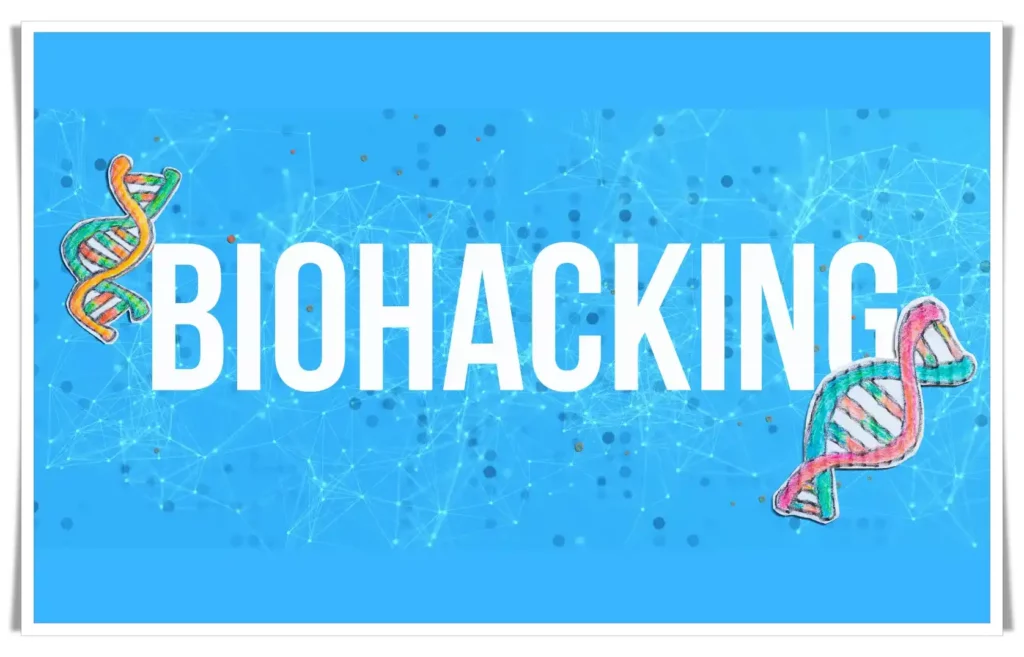
When it comes to sleep, biohacking takes on a special significance. Given the complexity of sleep mechanisms and how they are influenced by various internal and external factors, biohacking offers a tailored approach to improve sleep quality. By adjusting certain behaviors, such as exposure to light, diet, and physical activity, or by utilizing technology to track sleep patterns and environmental conditions, individuals can significantly enhance the quality of their sleep. This, in turn, boosts overall health, cognitive function, and emotional well-being.
Prominent figures in the biohacking community, like Dave Asprey and Ben Greenfield, have played pivotal roles in popularizing and advancing the practice. Dave Asprey, often regarded as the father of biohacking, is renowned for his Bulletproof Diet and for promoting practices such as intermittent fasting and the use of nootropics to enhance cognitive function, including the improvement of sleep quality. Ben Greenfield, on the other hand, combines his expertise in fitness, nutrition, and wellness to explore how various biohacks can significantly impact health and longevity, with a keen interest in how such interventions can optimize sleep.
Both experts exemplify the biohacker’s ethos of self-experimentation and data-driven lifestyle changes. They share their journeys, offering insights and practical advice on how to manipulate the body’s environment and biology to sleep better, recover faster, and perform at an optimal level. Through their work, Asprey and Greenfield not only provide valuable resources for individuals looking to improve their sleep but also inspire a broader conversation about the potential of biohacking to enhance our lives.
Practical Biohacking Tips for Quality Sleep
Achieving quality sleep is essential for both physical and mental well-being. Here are some practical biohacking tips that can help you enhance your sleep quality by leveraging the science of our bodies and our environment.
Sleep Cycle Diagram
This diagram illustrates the progression through the stages of sleep in a typical night, showing how a person moves from being awake to the various NREM stages, then to REM sleep, and how the cycle repeats multiple times.
Banish Blue Light
Description: This diagram demonstrates how exposure to blue light negatively impacts melatonin production and delays the sleep cycle, ultimately affecting sleep quality.
- Effects on Sleep: Blue light emitted by screens (phones, tablets, laptops) and LED lighting can significantly disrupt our natural sleep cycles. It inhibits the production of melatonin, the hormone responsible for regulating sleep, making it harder to fall asleep and stay asleep.
- Ways to Reduce Exposure:
- Use blue light filters on your devices after sunset.
- Wear blue light blocking glasses in the evening.
- Switch to warmer, dimmer lights in your home as bedtime approaches.
- Establish a digital curfew an hour before bedtime to minimize exposure.
Seek Out the Sun
- Importance for Circadian Rhythm: Natural sunlight plays a crucial role in maintaining our circadian rhythm—the body's internal clock that regulates sleep and wakefulness. Exposure to sunlight, especially in the morning, can help reset this rhythm, promoting better sleep quality at night.
- Practical Tips:
- Try to get at least 15-30 minutes of sunlight exposure every morning.
- Take your coffee or breakfast outside or near a sunny window.
- Incorporate a morning walk or outdoor exercise into your routine.
Use a Light Therapy Box
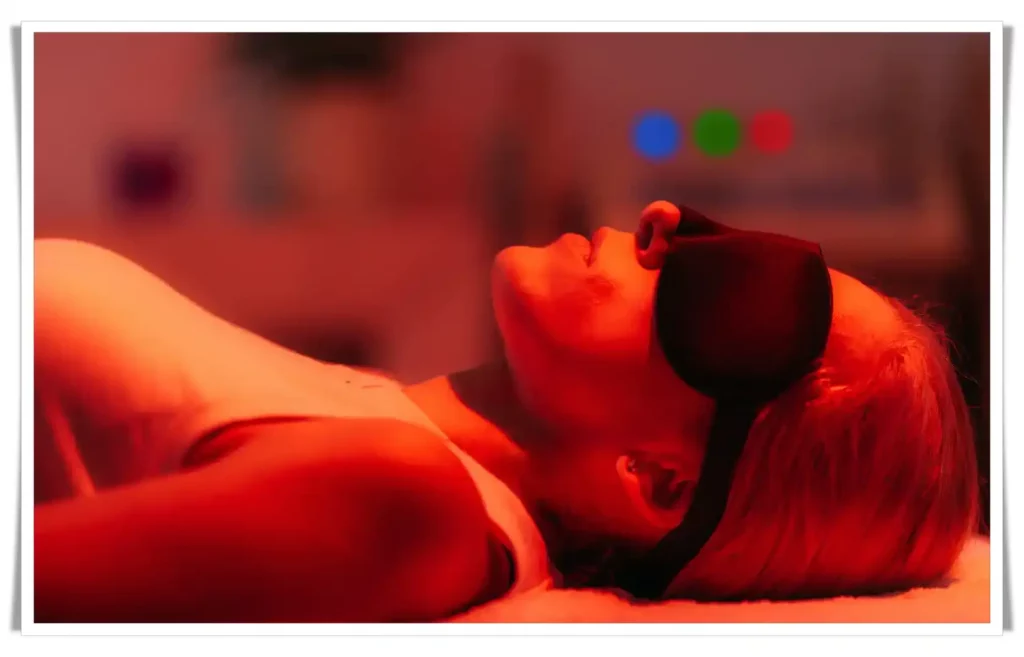
- For Insufficient Sunlight Exposure: During the shorter days of winter or for individuals who spend most of their time indoors, getting enough natural sunlight can be challenging. A light therapy box can mimic natural sunlight, helping to regulate the circadian rhythm and improve mood and sleep.
- How to Use:
- Place the light therapy box at an angle to the side, not directly in front of you, to avoid direct eye exposure.
- Use the light box for about 20-30 minutes in the morning.
- Choose a light therapy box that emits a minimum of 10,000 lux of light.
Sleep-Friendly Food Hacks
Foods to Promote Sleep:
- Cherries and cherry juice (natural sources of melatonin)
- Bananas (rich in magnesium and potassium, which relax muscles)
- Fatty fish (like salmon and mackerel, high in omega-3 fatty acids and vitamin D, supporting serotonin production)
- Almonds and walnuts (contain melatonin and magnesium)
- Herbal teas such as chamomile or valerian root (known for their calming effects)
Description: This diagram outlines how certain foods contribute to improved sleep quality through their content of tryptophan, melatonin, and magnesium.
Foods to Avoid:
- Caffeinated beverages (coffee, tea, some sodas) in the late afternoon or evening
- High-fat or spicy foods close to bedtime (can cause discomfort and indigestion)
- Heavy meals (can lead to discomfort and disrupt sleep)
- Alcohol (impairs the ability to reach the deeper stages of sleep)
Incorporating these biohacking tips into your daily routine can significantly impact your sleep quality, leading to improved energy, mood, and overall health.
Advanced Biohacking Techniques for Enhancing Sleep Quality
In the quest for better sleep, several advanced biohacking techniques can be employed to optimize sleep quality. These methods leverage the power of sound, scent, and physical activity to promote relaxation and enhance the body's natural sleep mechanisms.
Binaural Beats and Music Therapy

- Binaural Beats: This involves listening to soundtracks that play slightly different frequencies in each ear. The brain perceives these as a single tone, a phenomenon known as the frequency following response. This can induce states of relaxation, meditation, or sleep, depending on the frequency used. Binaural beats in the Delta (1-4 Hz) and Theta (4-8 Hz) frequency ranges are particularly effective for promoting deep, restorative sleep.
- Music Therapy: Listening to calming music before bedtime can significantly improve sleep quality. Music with a slow tempo, around 60 beats per minute, can help slow the heart rate and breathing, signaling the body that it's time for sleep. Classical music, jazz, and ambient soundscapes are excellent choices for sleep induction.
- How to Use: Incorporate a 30-minute session of listening to binaural beats or calming music as part of your bedtime routine. Ensure a comfortable, distraction-free environment for the best results.
Aromatherapy
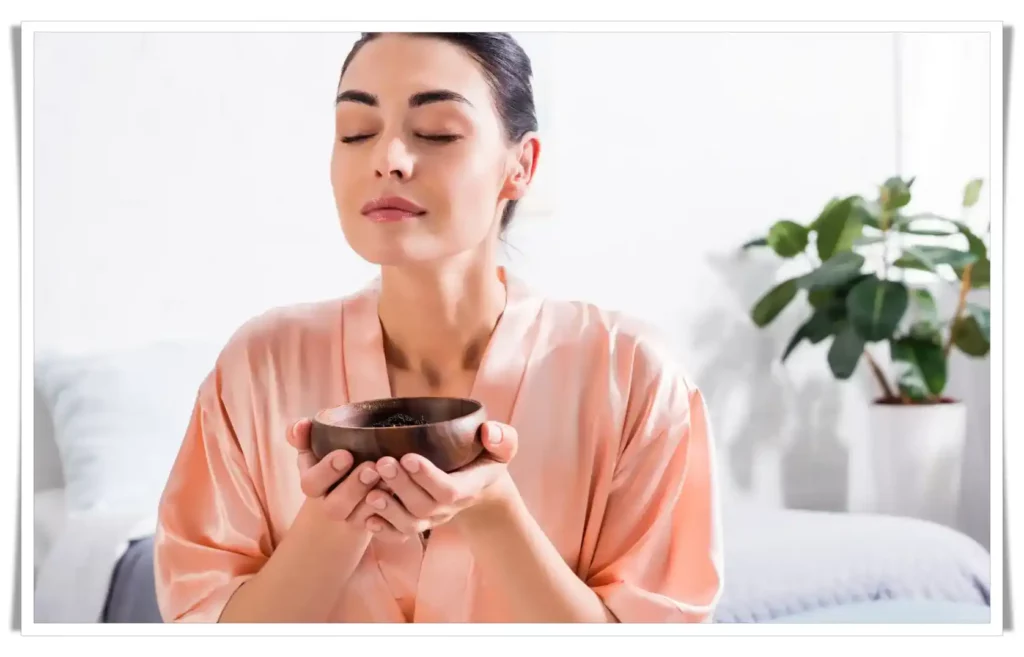
- Sleep Enhancement through Scent: Aromatherapy involves using essential oils to stimulate the senses and promote relaxation. Certain scents can directly impact the part of the brain responsible for controlling emotions and the sleep-wake cycle.
- Suggested Essential Oils:
- Lavender: Known for its calming and sedative properties, lavender oil is one of the most popular choices for improving sleep quality.
- Chamomile: Similar to the effects of chamomile tea, the essential oil is soothing and can help reduce anxiety and insomnia.
- Bergamot: A citrus scent that is calming and can reduce stress and anxiety levels.
- Sandalwood: With its rich, woodsy aroma, sandalwood is effective for treating insomnia and anxiety.
- How to Use: Add a few drops of essential oil to a diffuser before bedtime or mix with a carrier oil and apply to the wrists or temples. Alternatively, add a few drops to your evening bath for a relaxing pre-sleep ritual.
Regular Exercise and Unwinding Techniques
- Importance of Sleep: Regular physical activity can significantly improve the quality of sleep. It helps to regulate the body's internal clock, reduce stress, and tire you out in a good way. Exercise should be tailored to your personal fitness level and preferences, with a focus on achieving moderate intensity.
- Unwinding Techniques: Establishing a pre-sleep routine to unwind and relax is crucial for transitioning into sleep mode. Techniques can include reading, meditation, gentle yoga, or deep breathing exercises.
- Timing: Aim to complete any vigorous exercise at least three hours before bedtime to avoid being too energized to sleep. Reserve calming activities for the hour before you plan to sleep to signal your body that it's time to wind down.
Description: This diagram shows how regular exercise leads to an increase in deep sleep and a reduction in stress and anxiety, both of which contribute to improved sleep quality.
Implementing these advanced biohacking techniques can create a conducive environment for sleep, helping to tackle insomnia and improve overall sleep quality. Experiment with different methods to find what works best for you, and remember, consistency is key to seeing significant improvements in your sleep patterns.
Putting It All Together: A Guide to Starting with Biohacking Techniques for Better Sleep
Embarking on the journey of biohacking for improved sleep involves a blend of curiosity, experimentation, and patience. The goal is to understand your body's unique rhythms and responses to different stimuli and to use that knowledge to enhance your sleep quality. Here's how to start with biohacking techniques, experiment effectively, and find what works best for you.
Description: This diagram illustrates various unwinding techniques and their direct effects on relaxation and sleep quality.
Step 1: Assess Your Current Sleep Patterns
Before diving into biohacking techniques, take stock of your current sleep habits. Consider keeping a sleep diary for a week or two. Note down your bedtime, how long it takes you to fall asleep, any nighttime awakenings, and how you feel upon waking up. Assessing your current state is crucial for measuring progress and identifying areas for improvement.
Step 2: Start with the Basics
Begin with fundamental changes that impact sleep quality. This includes:
- Regulating Light Exposure: Implement changes to reduce blue light exposure in the evening and increase sunlight exposure during the day.
- Optimizing Your Sleep Environment: Ensure your bedroom is conducive to sleep—cool, dark, and quiet.
- Adjusting Your Diet: Incorporate sleep-promoting foods into your evening meals and minimize those that can disrupt sleep.
Step 3: Experiment with Advanced Techniques
Once you've implemented the basics, start experimenting with advanced biohacking techniques:
- Try Binaural Beats and Music Therapy: Experiment with different frequencies and types of music to find what soothes you into sleep.
- Incorporate Aromatherapy: Test various essential oils to discover which scents help you relax and drift off more easily.
- Engage in Regular Exercise: Find a time and type of exercise that energizes you during the day but doesn't hinder your sleep at night.
Step 4: Monitor and Adjust
As you experiment with different techniques, keep monitoring your sleep quality. Use a sleep tracker or continue your sleep diary to note any changes in your sleep patterns. Be patient and give each new technique a fair trial, usually a few weeks, before deciding on its effectiveness.
Step 5: Combine and Customize
The most effective biohacking strategy is often a personalized combination of techniques. For example, you might find that a mix of reducing blue light exposure, using lavender essential oil, and listening to soft music before bed works best for you. Be open to trying different combinations and adjusting based on your experiences and needs.
Encouraging a Holistic Approach
Achieving quality sleep through biohacking is not about quick fixes but adopting a holistic approach to your lifestyle. It involves being mindful of the interconnectedness of various aspects of your life—diet, exercise, stress levels, and your environment—and how they impact your sleep.
Remember, the aim is not to overhaul your life overnight but to make incremental changes that gradually lead to better sleep and, by extension, improved overall health and well-being. Stay curious, be patient with yourself, and remain open to tweaking your approach as you learn more about what truly works for you. By taking this comprehensive and personalized approach, you can unlock the secrets to restful, restorative sleep and reap the benefits that come with it.
Table with Reputable Sources
| Resource | Description | Link |
|---|---|---|
| National Sleep Foundation | Comprehensive guide on sleep health | Visit Site |
| Sleep.org by the National Sleep Foundation | Articles on sleep improvement techniques | Visit Site |
| Dave Asprey | Biohacking resources and guides for better sleep | Visit Site |
| Ben Greenfield Fitness | Fitness and wellness tips for improving sleep | Visit Site |
FAQs on Sleep, Biohacking, and Diet
1. How many hours of sleep do I really need?
The amount of sleep needed varies by age and individual needs, but adults typically require 7-9 hours per night. It's important to focus not just on quantity but also on the quality of sleep to ensure you're truly rested.
2. What is biohacking?
Biohacking is the practice of changing our chemistry and physiology through science and self-experimentation to energize and enhance the body. It involves making lifestyle changes that improve the performance of your body and mind, with a significant focus on sleep improvement techniques.
3. Can biohacking actually improve my sleep?
Yes, biohacking can significantly improve your sleep by optimizing your environment and lifestyle based on how your body responds to various stimuli. Techniques like regulating exposure to blue light, adjusting diet, and incorporating relaxation practices are effective ways to enhance sleep quality.
4. What foods should I eat to help me sleep better?
Foods rich in magnesium, calcium, and melatonin can promote better sleep. These include almonds, walnuts, cherries, bananas, and fatty fish like salmon. It's also helpful to avoid caffeine and heavy meals close to bedtime.
5. Is it bad to exercise before bed?
Vigorous exercise right before bed can be stimulating, potentially making it harder to fall asleep. It's best to complete intense workouts at least three hours before bedtime. However, gentle, relaxing exercises like yoga or stretching can be beneficial before sleep.
6. How does blue light affect sleep?
Blue light from screens and LED lighting can inhibit the production of melatonin, the hormone that signals your body it's time to sleep. Reducing exposure to blue light in the evening can help maintain your natural sleep cycle.
7. Can aromatherapy really help with sleep?
Yes, certain scents like lavender, chamomile, and bergamot have been shown to reduce stress and promote relaxation, making it easier to fall asleep. Using these scents in a diffuser or as part of a bedtime routine can enhance sleep quality.
8. What is the best way to start biohacking for better sleep?
Begin by observing your current sleep habits and environment. Make small, incremental changes, such as adjusting your exposure to natural light, optimizing your sleep environment, and modifying your diet. Track your sleep and how you feel each morning to find what works best for you.
Conclusion: Unlocking the Power of Sleep Through Biohacking
The journey toward achieving quality sleep is a cornerstone of not only physical health but mental and emotional well-being. In our fast-paced, screen-saturated world, the quest for restorative sleep has led many to explore the innovative field of biohacking. This practice offers a beacon of hope, illuminating the path to enhanced sleep patterns through simple yet effective lifestyle and environmental adjustments.
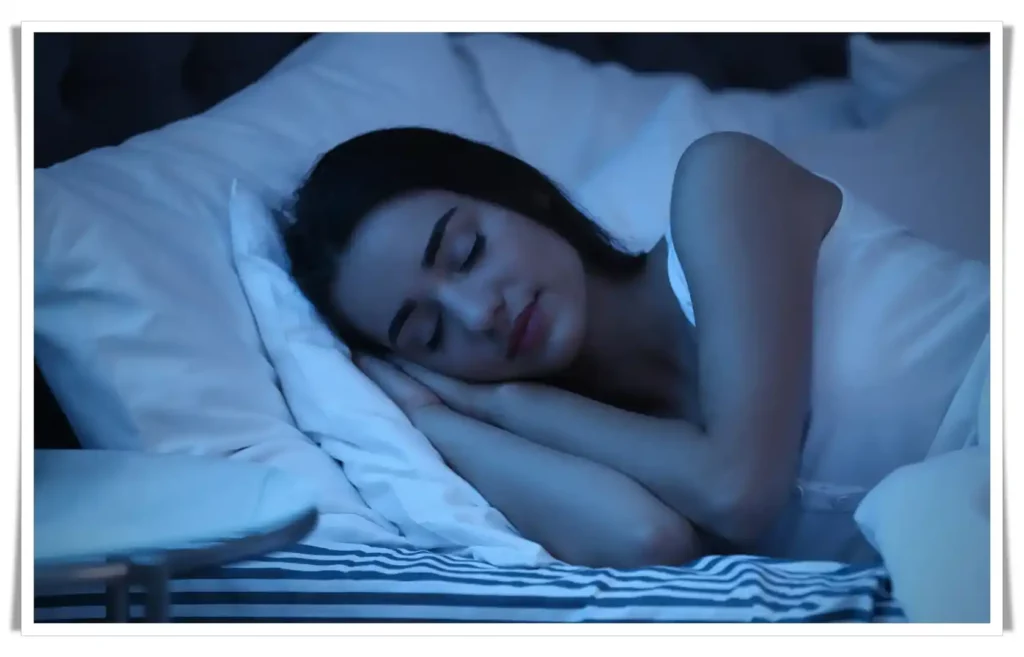
Biohacking for better sleep encompasses a wide array of strategies, from managing blue light exposure and optimizing diet to incorporating rhythmic exercise and leveraging the calming effects of aromatherapy. These techniques, grounded in the science of our biological rhythms, empower us to take control of our sleep quality, transforming our nights from restless to restorative.
As we've explored, the potential of biohacking to improve sleep is immense. It invites us to engage with our bodies in a proactive, personalized manner, blending ancient wisdom with cutting-edge science. By fine-tuning our environments and habits, we can unlock deeper, more refreshing sleep, setting the stage for enhanced vitality, sharper cognition, and improved overall health.
Now, we turn the conversation over to you. We invite you to share your experiences and insights on the journey to better sleep through biohacking. Have you tried any of the techniques mentioned? What worked for you, and what didn't? Your stories and feedback not only enrich our collective understanding but also inspire others to take the leap into biohacking for better sleep.
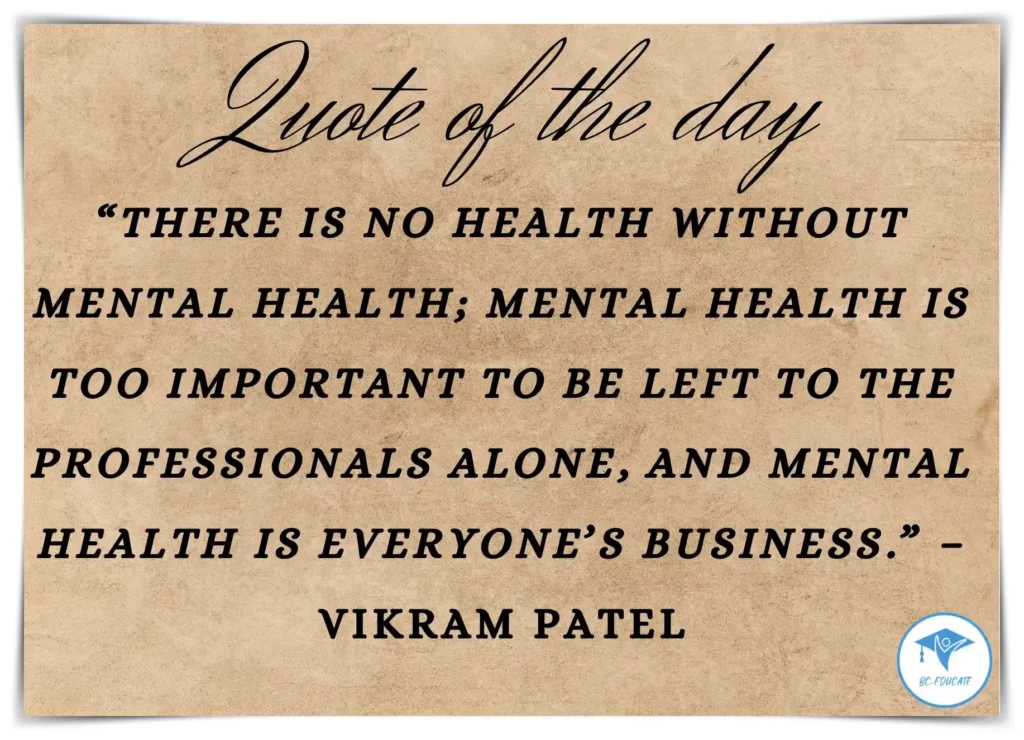
Explore further resources to deepen your journey:
- Dive into the “12 Best Busted Myths About Sleeping” for insights that challenge common misconceptions.
- Watch “Slumber and Slimming: The Science Behind Sleep and Weight Loss” on YouTube for an intriguing look at the connection between rest and metabolism.
- Enhance your knowledge with our collection of free e-books, offering a treasure trove of tips and strategies for optimizing your sleep and overall health.
Your journey to mastering sleep is a shared adventure, and your insights are invaluable. Comment below, share this article with those seeking better nights, and let's continue to explore the transformative power of sleep together.
These sources offer a wealth of information on sleep, biohacking, and how diet influences sleep quality. To access the information, you can search for these sources online:
- National Sleep Foundation - A leading resource for sleep research and education, offering comprehensive guides on improving sleep quality, understanding sleep disorders, and the importance of sleep for overall health. Website: sleepfoundation.org
- Dave Asprey's Blog - As a pioneer in the biohacking community, Dave Asprey provides insights into various biohacking techniques, including those that enhance sleep. His blog is a valuable resource for anyone looking to delve deeper into biohacking practices. Website: daveasprey.com
- PubMed Central (PMC) - For scientifically backed information and research studies, including the meta-analysis on sleep quality and mental health, PMC is an invaluable resource. It offers access to numerous studies on the impact of sleep on health. Study Link: Improving sleep quality leads to better mental health: A meta-analysis of randomised controlled trials
- Ben Greenfield Fitness - Ben Greenfield offers a holistic approach to health, fitness, and biohacking. His website includes articles, podcasts, and videos on a wide range of topics, including strategies for improving sleep through biohacking. Website: bengreenfieldfitness.com





Wow, awesome weblog layout! How lengthy have you ever been running a
blog for? you made blogging look easy. The entire glance of your site is fantastic, as smartly as the content!
You can see similar: najlepszy sklep
and here sklep
Hello my loved one! I want to say that this post is amazing, great written and include almost all significant infos. I would like to look extra posts like this.
This page is fabulous. The brilliant information reveals the publisher’s interest. I’m awestruck and envision further such mind blowing presents.
Good post! We will be linking to this particularly great post on our site. Keep up the great writing
Hey there! I’ve been following your web site for some time now and
finally got the courage to go ahead and give you
a shout out from Houston Texas! Just wanted to say keep up the excellent work!
I saw similar here: sklep and also here:
e-commerce
It’s my first time on your blog, and I have to admit that I’m amazed at how much research you did to produce such a fantastic post. A important portion was built with the help of someone.
[url=http://xn—-7sbbkgw6bbigeiain4n.xn--p1ai]тагриссо продать[/url] – tagriso, продать tagrisso
generic atorvastatin 20mg atorvastatin 80mg pills order atorvastatin 20mg online
how to get lipitor without a prescription order lipitor without prescription lipitor 10mg us
lipitor 40mg for sale buy atorvastatin online atorvastatin 20mg cost
buy lipitor pills for sale brand lipitor 20mg lipitor 20mg uk
order atorvastatin 20mg buy lipitor generic atorvastatin generic
cost atorvastatin 40mg order lipitor 10mg online atorvastatin 20mg pills
atorvastatin 40mg canada order atorvastatin for sale atorvastatin over the counter
order lipitor 20mg pills buy lipitor generic purchase lipitor sale
lipitor price lipitor 40mg generic buy atorvastatin for sale
cost lipitor buy lipitor 40mg pill order lipitor pill
atorvastatin 80mg usa atorvastatin 80mg drug lipitor generic
order atorvastatin 80mg generic cheap atorvastatin 40mg order lipitor 40mg online cheap
atorvastatin 80mg pills buy atorvastatin 10mg online cheap lipitor 40mg over the counter
order generic lipitor 80mg order lipitor 10mg generic purchase atorvastatin sale
Thank you for reaching out! If you have any specific questions or topics in mind, please feel free to share them, and I’ll do my best to assist you. Whether you’re curious about a particular technology, scientific concept, literary work, or anything else, I’m here to provide information, advice, or engage in a discussion. Don’t hesitate to let me know how I can help you further!